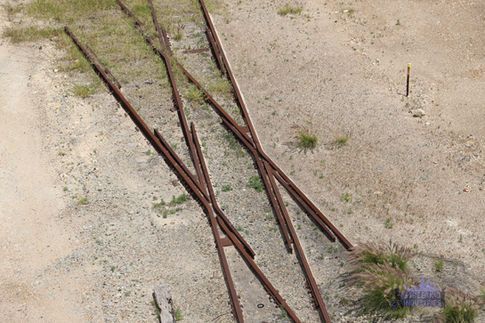
Leighton Rail Marshalling Yard
Ann Leighton
The Leighton Train Station was located in North Fremantle, in close proximity to Leighton Beach. It opened on 19 April 1922 and was a replacement for the original one, which had become known over time as Leighton’s Crossing. Named after Ann Leighton, who had worked as the crossing keeper for some 24 years, from the time the Fremantle to Guildford train line first opened in March 1881 until 1895. This involved her manually opening and closing the boom gates to allow trains to cross over the road.
Whilst her husband worked as a railway ganger (a supervisor or team leader given the responsibility of inspecting, constructing and repairing the rail line), it was named after Ann and not John (as incorrectly recorded by Heritage WA, amongst other sources).
North Fremantle Train Station
The new North Fremantle train station was built 670 metres away and opened on 28 July 1991. This was at the time when the three metropolitan train lines (Armadale, Fremantle and Midland) were becoming electrified, with the system becoming fully operational in September 1991 (The Perth-Joondalup line was opened on 20 December 1992).
ADG Railcars
The diesel mechanical railcars constructed by Cravens Railway Carriage & Wagon Co, Sheffield England, powered by ADG class locomotives, serviced the Perth metropolitan rail lines. They were later fitted with “supercharges to improve their performances” and then the Voith automatic transmissions 10 years later, which converted them into diesel hydraulic railcars.
After a number of constructive changes and becoming a series of ADG/V railcars, they were completely withdrawn from service by January 1992, with new electric railcars replacing them.
Marshalling Yards
The Leighton Rail Yards were built in the 1920s with the Marshalling Yard building constructed in 1966, becoming the control centre for the yards. It was demolished in August 2018 and little has been done with the site ever since.
Infrastructure on either end of the Marshalling Yard Building appears to have been demolished towards the end of 1989.





Leighton Shores
Located on a long strip measuring an area of approximately 17 hectares, it was hardly surprising the State Government and developers would make a beeline for this prime block of land. This would see development plans drawn up for Leighton Shores, after Planning and Infrastructure Minister Alannah MacTiernan sold the site to Leighton Shores Pty Ltd, a joint venture between Multiplex and Rockingham Park for $23 million.
More than $100 million would be invested in a residential complex with up to 50 apartments, alongside Mirvac’s $400 million development comprising of 170 apartments and terrace homes. Construction of Leighton Shores was expected to begin early 2008 with the first buildings due for completion in 2010.
Westrail had previously selected the “Leighton Shores consortium from six tenderers,” which was to result in a redevelopment plan so grand, accommodation would be built wall to wall, with “much-reduced public space and limited beach access”. It generated “widespread and intense community opposition,” with more than 1800 public submissions received when the draft Guidelines were released for public comment.
Vierendeel Truss Bridge
The Vierendeel Truss Bridge (a structure made of rectangular frames using moment joints “to resist substantial bending forces”), which was designed by Australian Government Engineer Donald G Williams and built in 1965, allows pedestrians and cyclists to cross the current Fremantle train line from Curtin Avenue to Stirling Highway. It looks rather similar to the Fremantle Footbridge, which was closed in around September 2022 due to safety concerns. This Leighton Bridge comes with its own safety concerns but is considered to be, “the most significant historical structure in the Leighton Beach marshalling yards by the State Heritage Office.”
The ramp once taking pedestrians to the Leighton Train Station has been fenced off with an array of measures, including barbed wire.
Remains
Partial remains of a brick wall and various debris by the banks on the Stirling Highway side, are almost completely concealed from the surrounding vegetation. It’s hard to see what it was for on old satellite imagery and at times, looks like it may have been an underpass for staff working in the rail yard, as there is some sort of path from Stirling Highway to the fence line.
The subway tunnel from Curtin Avenue to the Rail Marshalling Yard was completed sealed off during the early 1990s and appears to have been also used for staff working in the rail yard at the time.

























.png)

